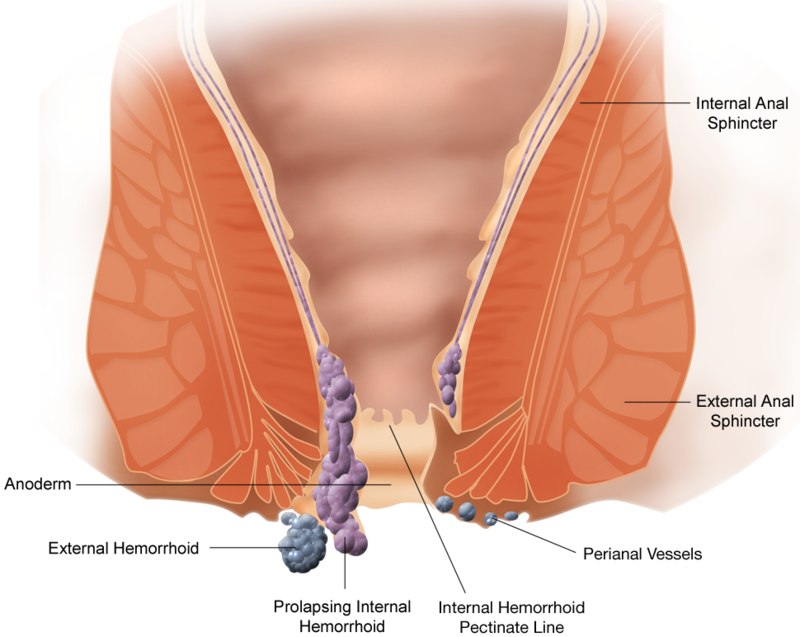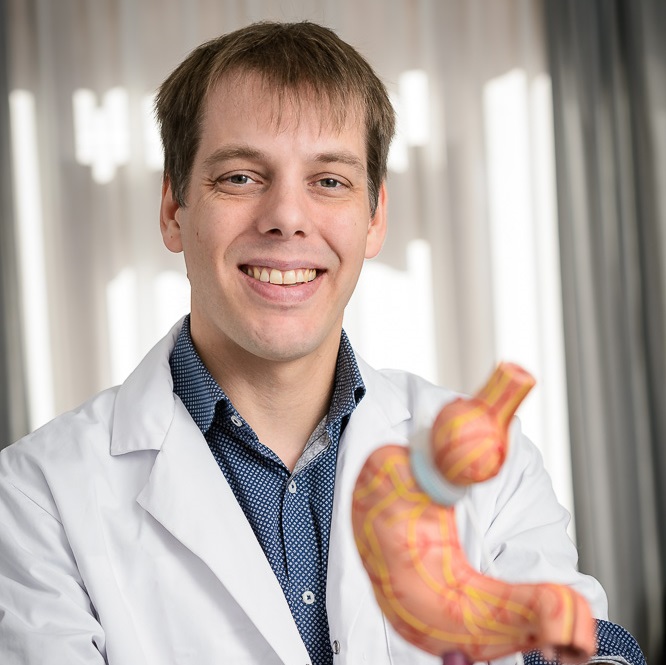Hemorrhoids
Hemorrhoids are swollen blood vessels in the rectum. Located in the lower part of the rectum and anus, hemorrhoids may swell, causing the vascular wall to stretch and become thinner and irritated when the patient passes stool.
Hemorrhoids are swollen blood vessels in the rectum. Located in the lower part of the rectum and anus, hemorrhoids may swell, causing the vascular wall to stretch and become thinner and irritated when the patient passes stool.
There are two types of hemorrhoids: internal and external

Internal hemorrhoids are located in the rectum where it’s impossible to see or feel them. Because the rectum has few pain receptors, internal hemorrhoids don’t usually cause pain. Bleedings are often the only symptom.
Sometimes internal hemorrhoids prolapse or become bigger, ultimately protruding the anal sphincter. When this happens, the hemorrhoids start to show as little moist cushions which are pinker than the surrounding skin. Protruded hemorrhoids can be painful as the anus does have a considerable amount of pain receptors. Protruded hemorrhoids usually recede by themselves. In case they don’t, they can sometimes be pushed back carefully.
External hemorrhoids are located in the anus and are usually painful. When an external hemorrhoid protrudes, it can be clearly seen and felt. Sometimes blood clots will formed in prolapsed, external hemorrhoids, causing a particularly painful affliction called hemorrhoid thrombosis. Nevertheless, thrombosed hemorrhoids are usually harmless and are likely disappear within a few weeks. When the pain becomes unbearable, however, removing the hemorrhoid may be recommended.
Swollen blood vessels can have several causes. Hemorrhoids may form due to extreme abdominal pressure caused by obesity, pregnancy, standing or sitting for long periods of time, coughing, sneezing or vomiting. A high-fiber diet can reduce the risk of getting hemorrhoids.
Hemorrhoids will never fully disappear unless they are surgically removed. A high-fiber diet is often recommended. If the pain persists, the following treatments are advised:
The treatments above are proved to be highly effective. Please note that patients must adopt a high-fiber diet to prevent the hemorrhoids from returning.

Dr. Yannick Nijs
Colorectal surgeon
St-Michel Europe Hospitals
150 Linthoutstraat
1040 Brussels
+32 470 588 537
+32 2 614 37 20